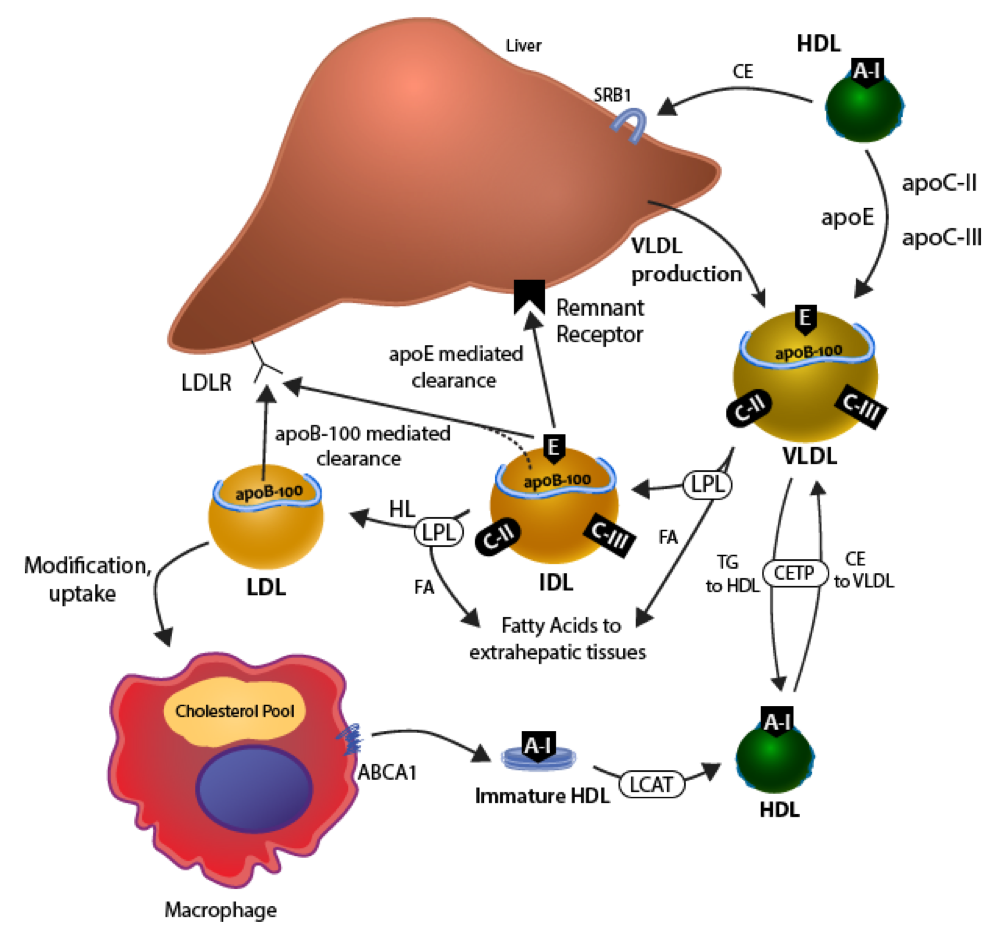
Figure 6. Metabolism of ApoB100 containing lipoproteins. ApoB100 is critical for the production and secretion of very low-density lipoprotein (VLDL) by the liver. Plasma VLDL is metabolized to cholesteryl ester-enriched intermediate low-density lipoprotein (IDL) and LDL particles via hydrolysis of triglycerides by lipoprotein lipase (LPL) and hepatic lipase (HL). In addition, cholesteryl ester transfer protein (CETP) transfers CE from HDL to VLDL in exchange for triglyceride (TG) to HDL. ApoCII and apoCIII are transferred from HDL to VLDL and act as an activator or inhibitor of LPL activity, respectively. ApoB100 is the ligand for hepatic LDL receptor-mediated clearance of LDL. VLDL acquires apoE from HDL, and apoE mediates the clearance of triglyceride-enriched remnants and IDL. In addition, HDL can directly transfer cholesterol to liver via interaction with SR-BI. VLDL and IDL remnants can induce foam cell formation by internalization via apoE receptors on macrophages. LDL, IDL, and VLDL can be modified (oxidation, glycation) and internalized by a number of macrophage receptors including scavenger receptors and lectin-like receptors. HDL and lipid-poor apoA-I reduce foam cell formation by stimulating cholesterol efflux.
